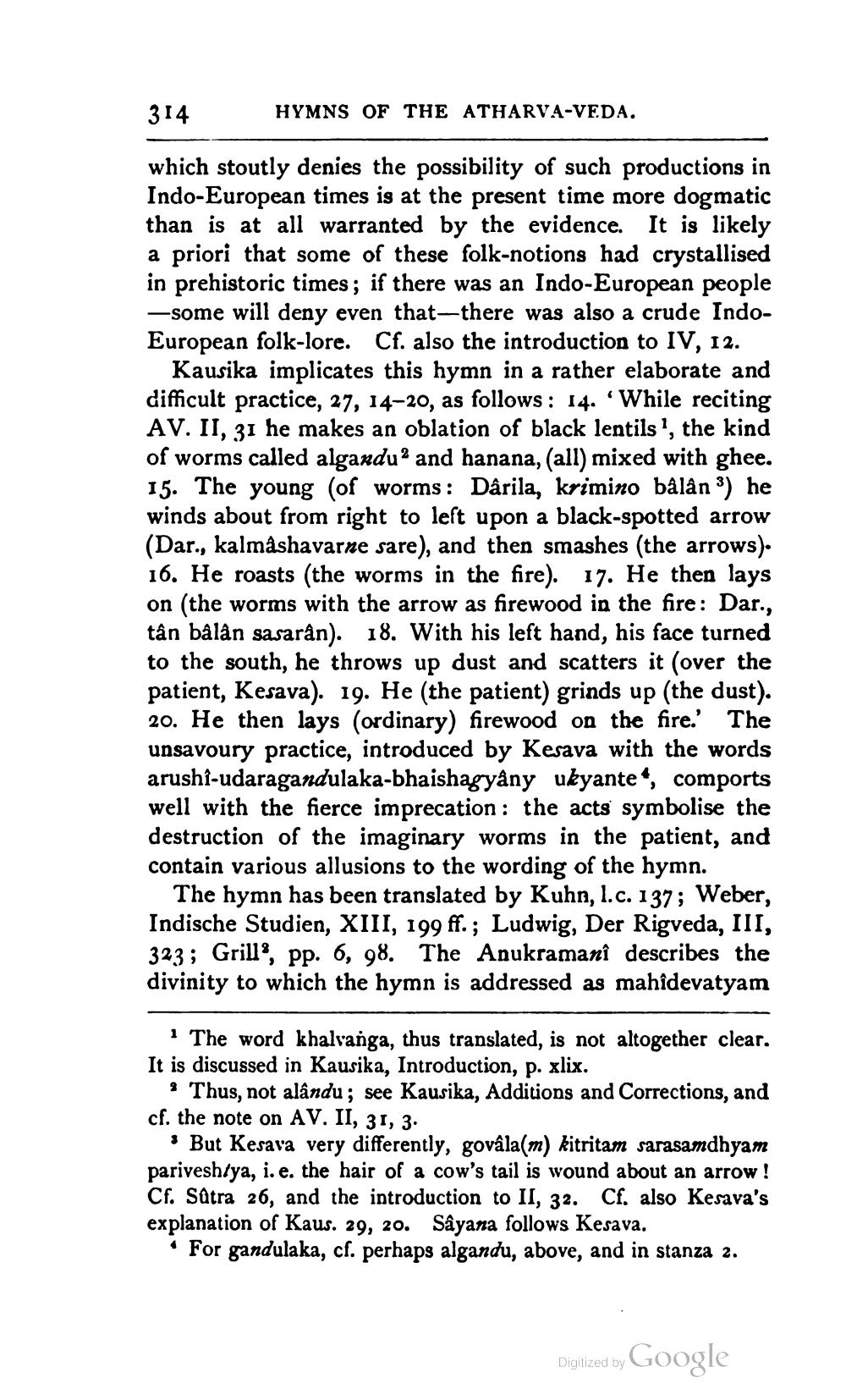________________
314
HYMNS OF THE ATHARVA-VEDA.
which stoutly denies the possibility of such productions in Indo-European times is at the present time more dogmatic than is at all warranted by the evidence. It is likely a priori that some of these folk-notions had crystallised in prehistoric times; if there was an Indo-European people —some will deny even that-there was also a crude IndoEuropean folk-lore. Cf. also the introduction to IV, 12.
Kausika implicates this hymn in a rather elaborate and difficult practice, 27, 14-20, as follows: 14. While reciting AV. II, 31 he makes an oblation of black lentils', the kind of worms called alganduo and hanana, (all) mixed with ghee. 15. The young (of worms: Dârila, krimino balân 3) he winds about from right to left upon a black-spotted arrow (Dar., kalmashavarne sare), and then smashes (the arrows). 16. He roasts (the worms in the fire). 17. He then lays on (the worms with the arrow as firewood in the fire: Dar., tân bâlân sasaran). 18. With his left hand, his face turned to the south, he throws up dust and scatters it (over the patient, Kesava). 19. He (the patient) grinds up (the dust). 20. He then lays (ordinary) firewood on the fire.' The unsavoury practice, introduced by Kesava with the words arushi-udaragandulaka-bhaishagyány ukyante+, comports well with the fierce imprecation: the acts symbolise the destruction of the imaginary worms in the patient, and contain various allusions to the wording of the hymn.
The hymn has been translated by Kuhn, 1.c. 137; Weber, Indische Studien, XIII, 199 ff.; Ludwig, Der Rigveda, III, 323; Grills, pp. 6, 98. The Anukramanî describes the divinity to which the hymn is addressed as mahîdevatyam
The word khalvanga, thus translated, is not altogether clear. It is discussed in Kausika, Introduction, p. xlix.
* Thus, not alându; see Kausika, Additions and Corrections, and cf. the note on AV. II, 31, 3.
But Kesava very differently, govâla(m) kitritam sarasamdhyam pariveshtya, i.e. the hair of a cow's tail is wound about an arrow! Cf. Sätra 26, and the introduction to II, 32. Cf. also Kesava's explanation of Kaus. 29, 20. Sâyana follows Kesava.
• For gandulaka, cf. perhaps algandu, above, and in stanza 2.
Digitized by Google




